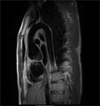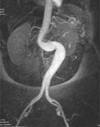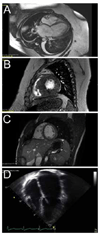New Genetic Insights into Congenital Heart Disease
- PMID: 22822471
- PMCID: PMC3401115
- DOI: 10.4172/2155-9880.S8-003
New Genetic Insights into Congenital Heart Disease
Abstract
There has been remarkable progress in understanding the genetic basis of cardiovascular malformations. Chromosome microarray analysis has provided a new tool to understand the genetic basis of syndromic cardiovascular malformations resulting from microdeletion or microduplication of genetic material, allowing the delineation of new syndromes. Improvements in sequencing technology have led to increasingly comprehensive testing for aortopathy, cardiomyopathy, single gene syndromic disorders, and Mendelian-inherited congenital heart disease. Understanding the genetic etiology for these disorders has improved their clinical recognition and management and led to new guidelines for treatment and family-based diagnosis and surveillance. These new discoveries have also expanded our understanding of the contribution of genetic variation, susceptibility alleles, and epigenetics to isolated congenital heart disease. This review summarizes the current understanding of the genetic basis of syndromic and non-syndromic congenital heart disease and highlights new diagnostic and management recommendations.
Figures





References
-
- Gelb BD, Tartaglia M. Noonan syndrome and related disorders: dysregulated RAS-mitogen activated protein kinase signal transduction. Hum Mol Genet. 2006;15(Spec No 2):R220–R226. - PubMed
-
- Tartaglia M, Mehler EL, Goldberg R, Zampino G, Brunner HG, et al. Mutations in PTPN11, encoding the protein tyrosine phosphatase SHP-2, cause Noonan syndrome. Nat Genet. 2001;29:465–468. - PubMed
-
- Romano AA, Allanson JE, Dahlgren J, Gelb BD, Hall B, et al. Noonan syndrome: clinical features, diagnosis, and management guidelines. Pediatrics. 2010;126:746–759. - PubMed
-
- Noonan JA. Hypertelorism with Turner phenotype. A new syndrome with associated congenital heart disease. Am J Dis Child. 1968;116:373–380. - PubMed
Grants and funding
LinkOut - more resources
Full Text Sources
